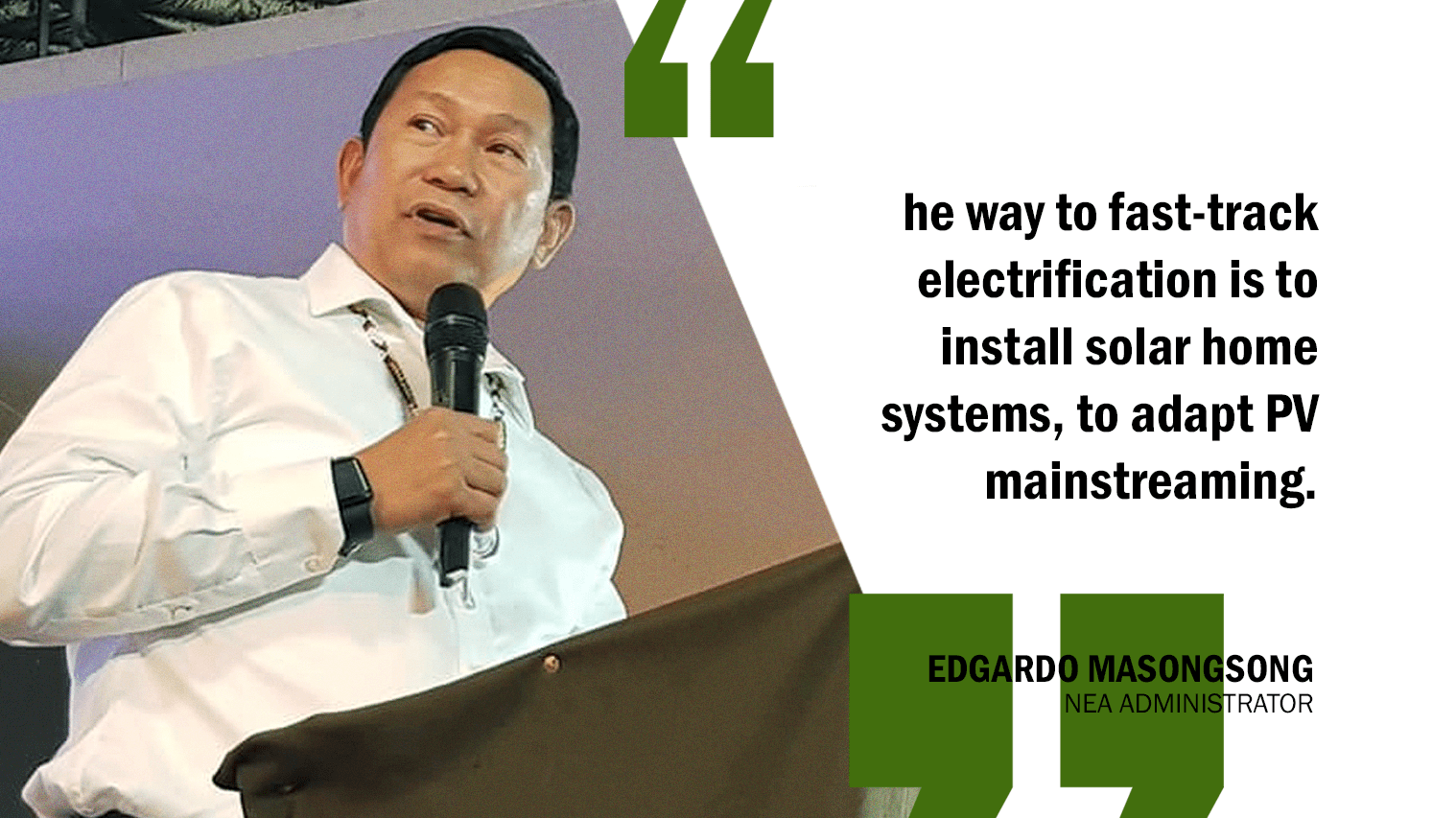The National Electrification Administration (NEA) is looking at solar photovoltaic (PV) systems and other alternatives to speed up electrification in rural and remote areas where about two million households are still waiting for steady and reliable power services.
NEA Administrator Edgardo Masongsong said the agency has began exploring several strategies to light up the remaining unserved sitios within the coverage areas of electric cooperatives (ECs) across the country.
Among these measures, Masongsong said, include the use of low-cost renewable energy technologies such as the PV mainstreaming or solar home system which targets mainly “off-grid” areas.
Of the 19,740 sitios that remain without access to electrical power across the country, NEA has identified 1,702 as “off-grid.” These are found mainly in Mindanao with 1,003 sitios, followed by the Visayas with 557 sitios, and Luzon with 142 sitios.
Last August 14, Masongsong graced the gathering of representatives from NEA, the Department of Energy (DOE), LGU Guarantee Corporation (LGU-GC) and electric cooperatives (ECs) involved in the PV mainstreaming project under the European Union-Access to Sustainable Energy Programme (EU-ASEP) in Davao City.
“ECs must think outside the box in financing the electrification of households given the limited subsidy from the government.”
In his message, the NEA chief said the ECs should take advantage of the opportunities extended by EU-ASEP and the World Bank to electrify the remaining non-energized sitios.
He also urged the ECs to “think outside the box” in financing the electrification of households given the limited subsidy from the government.
“The challenge now for electric cooperatives is if you do not want to give up your franchise area, or a portion of it, even the unviable locations that are still unserved, you have to invest. The way to fast-track electrification is to install solar home systems, to adapt PV mainstreaming,” Masongsong said.
For 2019, the NEA has a budget allocation of P1.163 billion for its sitio electrification program, and another P165 million for its renewable projects, which include the installation of 5,000 solar home systems.
Solar PV mainstreaming
PV mainstreaming is a program of the DOE, funded by the EU-ASEP through the World Bank. The LGU Guarantee Corporation (LGU-GC) serves as program manager while the NEA acts as an implementing arm, being the supervisory body of all ECs in the country.
“The solar home system is a cheaper and more viable option to energize communities that are too far from the power grid.”
Beneficiaries for the program’s first window included sitios under the franchise areas of the North Cotabato Electric Cooperative, Inc. (Cotelco), South Cotabato II Electric Cooperative, Inc. (Socoteco II), Davao del Sur Electric Cooperative, Inc. (Dasureco), and Sultan Kudarat Electric Cooperative, Inc. (Sukelco). The first window entails the installation of 10,000 solar home systems.
Dasureco General Manager Godofredo Guya said the solar home system is a cheaper and more viable option to energize communities that are too far from the power grid, such as Sitio New Mabuhay in Barangay Little Baguio, Malita, Davao Occidental.
“We’ve allocated 2,500 solar PV units for Barangay Little Baguio in Malita alone. With this solar home system there is no need for us to procure the right-of-way for our lines because there are no lines passing through the private properties of land owners,” Guya said.
Electricity reaches Sitio New Mabuhay
The family of Myda Espinosa-Gunao, a resident of Sitio New Mabuhay, used to rely on kerosene lamps for lighting. Things changed for the family and their neighbors when electricity finally arrived at their their small village earlier this month.
Now with electricity, children in the village can now study well into the night under electric lights powered by solar home systems, said Gunao, a 48-year-old mother of seven. Having electricity also enabled village residents to continue working and perform other household chores even after dark.
Electrification data show that 19,740 sitios in the country remain without electricity. As of June 30, 2018, NEA and its partner ECs have energized 1,809 sitios, bringing the number of sitios that remain unserved with electricity down to 17,931.


